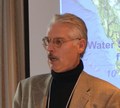NEW NORMAL IN BRITISH COLUMBIA: South Coast saw its driest May in recorded history due to a large ridge of high pressure, Environment Canada says

“We’ve been under a very dominant, big, blocking ridge of high pressure that hasn’t just lasted days at a time, but also weeks at time,” Lisa Erven said. “It’s been one of the driest Mays on record for many communities, but also one of the hottest Mays on record for communities right from Vancouver Island, to Cranbrook and right through the central Interior.” Abbotsford tied for hottest May ever with an average temperature of 15.5 for the month, the same as in 1993. It was Victoria’s second warmest and second driest May.
“Water regulators and suppliers must change their mind-sets now if they are to future-proof our natural resources for generations to come,” says Dr. Peter Coombes, Australian water champion

“The detail revealed by the Systems Framework underpins the Natural Capital approach which incorporates ecosystems into resilience evaluation,” stated Peter Coombes. “In fact, the Systems Framework was developed out of the systems thinking at the root of the Natural Capital concept. The power and accuracy of the systems analysis has been dramatically increased by our bottom-up methods, and also by our use of discoveries from molecular sciences (around DNA processes) and economic decision theory.”
Potential of Nature-Based Solutions (NBS): 2018 World Water Development Report addresses contemporary water management challenges across all sectors

“Today, more than ever, we must work with nature, instead of against it,” said Audrey Azoulay, Director-General of UNESCO in the foreword of the report. “Demand for water is set to increase in all sectors. The challenge we must all face is meeting this demand in a way that does not exacerbate negative impacts on ecosystems.” Nature-based solutions (NBS) offer a vital means of moving beyond business-as-usual to address many of the world’s water challenges while simultaneously delivering additional benefits vital to all aspects of sustainable development.
RBC Attitudes Study Reveals that Canadians Remain Conflicted About Our Most Precious Natural Resource: Fresh Water

“We don’t pay the real costs of the water we use—neither the costs necessary to transport and treat it, nor the environmental costs of wasting it. As a result, we’ve come to believe that water is cheap. There’s no incentive to use less of it,” states Bob Sandford. “I think many of our tensions around water are coming to a head. That is important, because we cannot change our actions until we change our minds.”
Australia’s inefficient water monopoly structure is gouging consumers!

“The editor of Australia’s most respected economic and business newspaper, the Financial Review, has questioned the wisdom of the arguments for sole reliance on large scale centralised water infrastructure, in particular desalination. This process motivated an article about competition across scales. This has resulted in a range of actions, including collaboration with our key federal regulator and discussions with a range of government leaders”, wrote Peter Coombes.
Restoring the Water Balance: What Happens on the Land Matters!

In the June 2016 issue of Sitelines magazine, nine articles showcase the breadth of program elements delivered by the Partnership for Water Sustainability. “The set of articles introduces readers to concepts such as ‘water as a form-maker’. This means watersheds are defining landscapes,” stated Tim Pringle. “In many ways, the built environment has to adapt to watershed features and water movements to maintain viable settlements.”
Water is a Form-Maker: Building water-resilient communities explored at FLOWnGROW Workshop

“The themes, Whole Systems Approach, reflecting integration through inclusion, Blue Ecology, the interweaving of First Nations and Western Thought and Cathedral Thinking, the foresight and planning for future generations, set the context for the day,” stated Eric Bonham. “The purpose of the workshop was to explore ideas that have universal value and broad application as we travel the road towards genuine long-term water sustainability.”
A Water Rhythm: “I created this term to help describe how to wean plants from regular water supply,” explained Ken Salvail, co-host of the ‘Grower Coach’ radio show, at the FLOWnGROW workshop (Nov 2016)

The Okanagan Region is heavily dependent on irrigation to nourish crops and maintain greenspace throughout a parched region. Ken Salvail’s experience is that people in the Okanagan use more water than is needed. This results from a lack of understanding of how much water is enough. “The irrigation systems that I design and install tend to teach plants how to live with constant water rather than little water,” wrote Ken Salvail.
Health of British Columbia’s rivers will depend largely on summer rainfall, according to River Forecast Centre

The influence of the snow melt season occurring about a month early this year is expected to continue through the summer, with the largest departures from normal flows occurring in late-June and through July. “The province has registered 13 per cent of the normal amount of snowpack in the mountains after high temperatures in March, April and early May,” reported David Campbell. “River water flows are sitting at about one-quarter to three-quarters of what they would normally be this time of year.”
Level 3 drought declared for parts of Vancouver Island, Gulf Islands

“I would say the canary in the coal mine, which probably prompted that is the Cowichan River,” said Julie Pisani, Regional District of Nanaimo. The Cowichan River is at less than 20 per cent of its normal median flow for this time of year. It’s a similar tale for other rivers in the region. “Even though we had better snow accumulation through the winter, the warm weather has melted the snow that did accumulate … so that translates into stream flows being lower than normal as well.”

